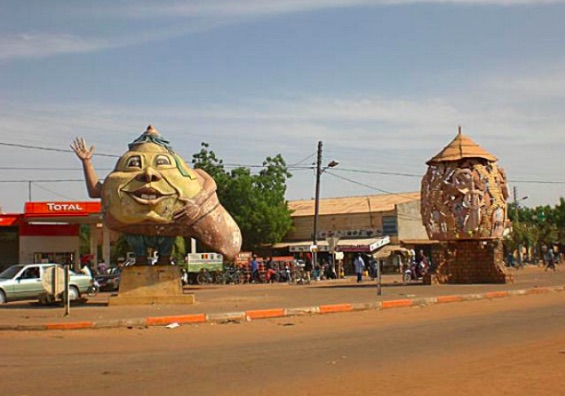DISARMAMENT & SECURITY .
An article by Douba Dembele for Mali Actu
The urban commune of Ségou hosted on 7, 8 and 9 September two consultations on peace and national cohesion. Participants from the Mopti and Niono, Macina and Tominian areas in the Ségou region came for two days of reflection and identification of lasting solutions to their intra and intercommunal conflicts.

The town of Ségou (for illustrative purposes)
140 representativers took part in the meeting. It was initiated by the Center for Humanitarian Dialogue, with funding from the Kingdom of the Netherlands, accompanied by the Ministry of National Reconciliation. As a result of the meeting, an additional day of exchange, information and awareness-raising on the mission to support reconciliation and support teams was held on Saturday, 9 September, at the same venue as the previous session, the conference room of the Governorate of Ségou. The work of this day was attended by some forty delegates from the 7 areas of the region of Ségou.
The delegates, chosen on the basis of their social influence and their involvement in the management of conflicts in their areas, were mostly civil society leaders. These included village chiefs, religious leaders, traditional communicators and journalists. Organized by the Ministry of National Reconciliation in partnership with the Reconciliation Support Mission and the Center for Humanitarian Dialogue, the one-day meeting was also suppoted by the Kingdom of the Netherlands.
This meeting in Ségou brought together actors from Douentza, Tenekou, Mopti, Djenné, Youwarou, Koro, Bankass, Ké-Macina, Niono and Tominian areas. The head of the mission of the Center for Humanitarian Dialogue, Hama Amidou Diallo, set the scene for the meeting. According to him, the Ségou meeting, like that of Mopti, is in keeping with the actions taken to promote social dialogue within the communities, through intra-community and inter-community meetings organized at the village, communes, circles and in the regional capitals. The result should be the safeguarding of social peace and the consolidation of living together.
(Continued in the right column)
Pan-African initiatives for peace: Are they advancing?
(Continued from the left column)
The head of cabinet of the Ministry of National Reconciliation welcomed the meeting in Ségou, affirming that it aims to reinforce the actions carried out by his department as part of its strategy of reconciliation. He also urged each of the participants to call for the promotion of the culture of peace and non-violence. The governor of the region of Ségou, Georges Togo, who presided over the meeting, was pleased to see Mali’s communities gather in Segou to forgive and build lasting peace in their respective localities, based on societal values.
At the end of the meeting, on Friday, 8 September, the participants drew up a series of recommendations for peace, social cohesion and living together. It should be noted that the meeting of Ségou mainly brought together actors from the communities, Bamanan, Peul and Dogon of the circles cited above.
The Segou meeting was attended by the head of the mission, Modibo Kadjogué, the head of cabinet of the Ministry of National Reconciliation, Colonel Moussa Zabou Maïga, the governor of Ségou, economic operator Djadié Bah de Niono, himself chairman of the committee for monitoring peace and reconciliation in his circle, and many other personalities from the Ségou region.
The Chief of Staff of the Ministry of Reconciliation presented the missions of his ministry and the objectives of the mission to support peace and national reconciliation. He added that the State alone can not bring peace without the involvement of communities at the grassroots level, that the Department of National Reconciliation has set up the support mission to reconciliation. For the best functionality of the objectives of this unit, it was decided to establish regional support teams in all regions of Mali.
The conclusion for Segou was the proposal of moral personalities committed to social cohesion, for the establishment of the regional team of Segou, composed of 7 members. This team, once installed, will be involved in preventing and managing conflicts in all circles in the region.
With the two meetings held in Segou, it can be said that Segou had become the capital of the humanitarian dialogue for the regions of central Mali. It should be recalled that the region of Ségou has been affected by intra and inter-community conflicts, notably in the circles of Macina and Niono. Also, the Tominian Circle has received displaced persons following similar conflicts in the Mopti region.